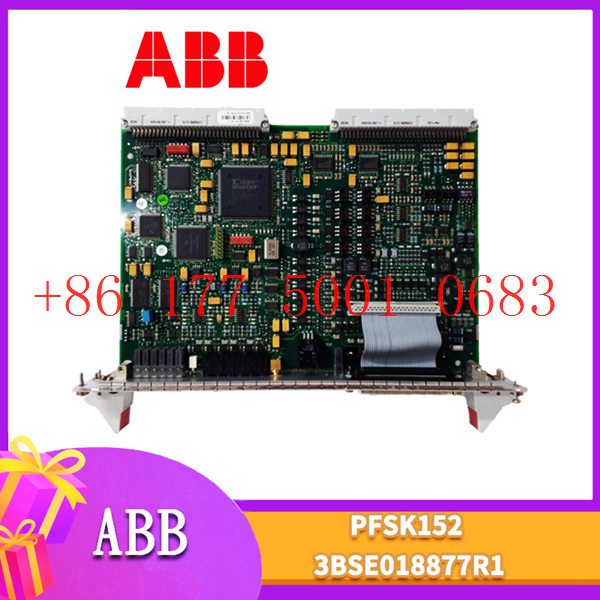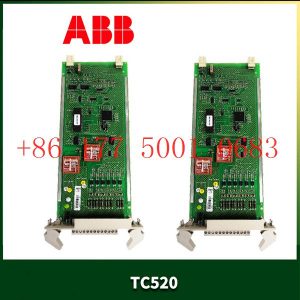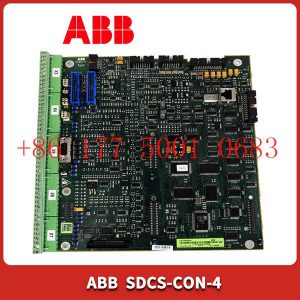3BHL000986P0006 Controller ABB Product details:
3BHL000986P0006 is an interface communication module from ABB, with product model 3BHL000986P0006. This module is commonly used in industrial automation systems,
especially in the field of process control. Here are some possible application and product operation areas:
Industrial automation: Th3BHL000986P0006 communication module may be used to communicate with other automation equipment, control systems,
or sensors to achieve automation and integration of industrial production lines.
Process control: This module may be used to monitor and control various processes, such as chemical plants, power plants, pharmaceutical plants,
etc. Through communication with other devices, it can achieve data exchange and control instruction transmission.
PLC (Programmable Logic Controller) system3BHL000986P0006 may be integrated into the PLC system for communication with other PLC modules or
external devices, achieving centralized management of the entire control system.
Data collection and monitoring: In the data collection system3BHL000986P0006 can be used to obtain data from various sensors and devices,
and transmit this data to the monitoring system for real-time monitoring and analysis.
Remote monitoring and operation: Through collaborative work with other communication modules3BHL000986P0006 may support remote monitoring and operation,
allowing operators to monitor and control the production process from different locations.
Contact person: Mr. Lai
Mobil:17750010683
WeChat:17750010683
WhatsApp:+86 17750010683
(5) Perform predictive maintenance, analyze machine operating conditions, determine the main
causes of failures, and predict component failures to avoid unplanned downtime.
Traditional quality improvement programs include Six Sigma, Deming Cycle, Total Quality Management (TQM), and Dorian Scheinin’s
Statistical Engineering (SE) [6]. Methods developed in the 1980s and 1990s are typically applied to small amounts
of data and find univariate relationships between participating factors. The use of the MapReduce paradigm to simplify data processing in
large data sets and its further development have led to the mainstream proliferation of big data analytics [7]. Along with the development of
machine learning technology, the development of big data analytics has provided a series of new tools that can be applied to manufacturing
analysis. These capabilities include the ability to analyze gigabytes of data in batch and streaming modes, the ability to find complex multivariate
nonlinear relationships among many variables, and machine learning algorithms that separate causation from correlation.
Millions of parts are produced on production lines, and data on thousands of process and quality measurements are collected for them, which is
important for improving quality and reducing costs. Design of experiments (DoE), which repeatedly explores thousands of causes through
controlled experiments, is often too time-consuming and costly. Manufacturing experts rely on their domain knowledge to detect key
factors that may affect quality and then run
DoEs based on these factors. Advances in big data analytics and machine learning enable the detection of critical factors that effectively
impact quality and yield. This, combined with domain knowledge, enables rapid detection of root causes of failures. However,
there are some unique data science challenges in manufacturing.
(1) Unequal costs of false alarms and false negatives. When calculating accuracy, it must be recognized that false alarms
and false negatives may have unequal costs. Suppose a false negative is a bad part/instance that was wrongly predicted to
be good. Additionally, assume that a false alarm is a good part that was incorrectly predicted as bad. Assuming further that
the parts produced are safety critical, incorrectly predicting that bad parts are good (false negatives) can put human lives
at risk. Therefore, false negatives can be much more costly than false alarms. This trade-off needs to be considered when
translating business goals into technical goals and candidate evaluation methods.
PPC380AE02 HIEE300885R0102 ABB Output module
PR9268/307-100 9200-06121n EPRO Processor module
PFEA112-20 3BSE030369R0020 ABB Tension Electronics PFEA112
PM01 PM01-A-V001 TRICONEX Power management module
IS220PDIOH1B GE I/O pack
IS210AEDBH4AGD GE Mark VI printed circuit board
IS210AEBIH1BED GE Speedtronic Mark V Gas Turbine Control System
IOP313 METSO System domain network interface card
IOP310 METSO System domain network interface card
CM01 CM01-A-V001 TRICONEX Analog output module
DO3201 DO3201-A-V001 TRICONEX Analog output module
HC422B N-300 TOSHIBA
DO810 3BSE008510R1 ABB Digital Output
AI3281 AI3281-A-V001 TRICONEX Analog output module
BI01 BI01-A-V001 TRICONEX Digital quantity input template
330130-045-00-00 Bently Nevada 3300 XL Extension Cable
135489-03 Bently Nevada I/O module
DI3201 DI3201-A-V001 TRICONEX Analog output module
9200-01-01-10-00 Bently Nevada Two-Wire Velocity Seismoprobe Transducer
8521-LC-MT GE Logic Controller
8421-CC-PS GE CONTROLLER POWER CABLE
3511 TRICONEX 3511 Pulse Input Module
VT-HNC100-1-23 W-08-0-0 R900955334 Rexroth Digital Axis Controllers
705-1512-01 GE Processor module
T9451 ICS TRIPLEX AADvance Controllers series
SAN3-40 SAN3-40M DDK Servo Axis Controller
T9402 ICS TRIPLEX AADvance Controllers series
PR6423002-001-CN EPRO Eddy Current Sensor
PQM-T20-C-A GE POWER QUALITY METER
PDP800 ABB Profibus DP V0/V1/V2 Master Module
IS200EPSMG1ABB GE Exciter Power Supply Module
F35 HIMA Safety-Related Controller
F3 DIO 88 01 HIMA Safety-Related Controller
F3 AIO 84 01 HIMA Safety-Related Controller
DS200DCFBG1BNC GE Power Supply Board
CP451-51 YOKOGAWA Processor Module
A4H254-8F8T P0973JP Enterasys Network Switch
9200-06-02-10-00 Bently Nevada Two-Wire Transducer
8937-HN HONEYWELL Fiber Optic Extender Module
T9110 ICS TRIPLEX AADvance Processor Module
140CRA93200 Schneider RIO DROP ADAPTOR MODULE
CACR-02-TE1K YASKAWA
140DDI35300 Schneider DISCRETE INPUT MODULE









Reviews
There are no reviews yet.